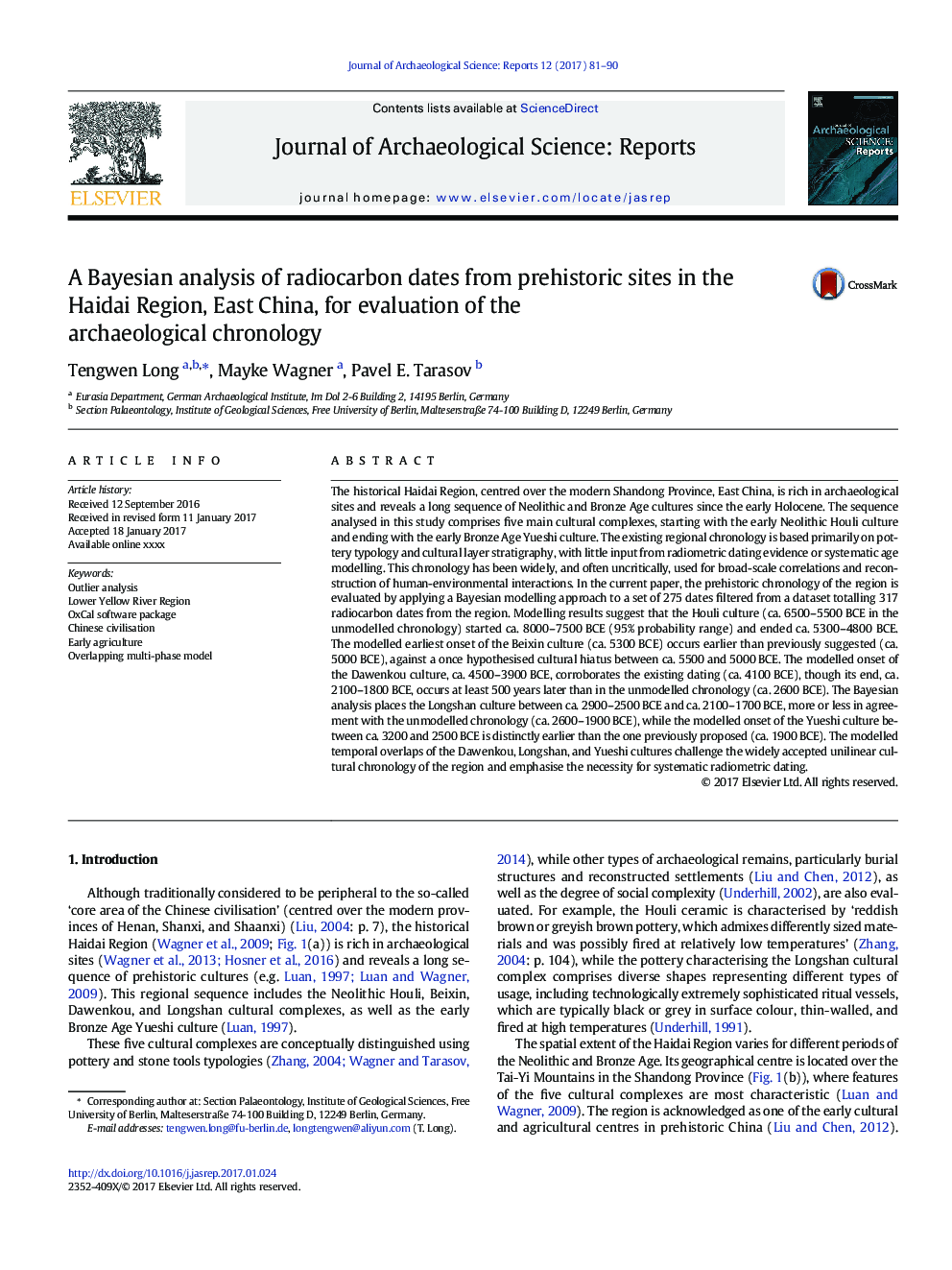| کد مقاله | کد نشریه | سال انتشار | مقاله انگلیسی | نسخه تمام متن |
|---|---|---|---|---|
| 5112480 | 1483931 | 2017 | 10 صفحه PDF | دانلود رایگان |
عنوان انگلیسی مقاله ISI
A Bayesian analysis of radiocarbon dates from prehistoric sites in the Haidai Region, East China, for evaluation of the archaeological chronology
دانلود مقاله + سفارش ترجمه
دانلود مقاله ISI انگلیسی
رایگان برای ایرانیان
موضوعات مرتبط
علوم انسانی و اجتماعی
علوم انسانی و هنر
تاریخ
پیش نمایش صفحه اول مقاله

چکیده انگلیسی
The historical Haidai Region, centred over the modern Shandong Province, East China, is rich in archaeological sites and reveals a long sequence of Neolithic and Bronze Age cultures since the early Holocene. The sequence analysed in this study comprises five main cultural complexes, starting with the early Neolithic Houli culture and ending with the early Bronze Age Yueshi culture. The existing regional chronology is based primarily on pottery typology and cultural layer stratigraphy, with little input from radiometric dating evidence or systematic age modelling. This chronology has been widely, and often uncritically, used for broad-scale correlations and reconstruction of human-environmental interactions. In the current paper, the prehistoric chronology of the region is evaluated by applying a Bayesian modelling approach to a set of 275 dates filtered from a dataset totalling 317 radiocarbon dates from the region. Modelling results suggest that the Houli culture (ca. 6500-5500Â BCE in the unmodelled chronology) started ca. 8000-7500Â BCE (95% probability range) and ended ca. 5300-4800Â BCE. The modelled earliest onset of the Beixin culture (ca. 5300Â BCE) occurs earlier than previously suggested (ca. 5000Â BCE), against a once hypothesised cultural hiatus between ca. 5500 and 5000Â BCE. The modelled onset of the Dawenkou culture, ca. 4500-3900Â BCE, corroborates the existing dating (ca. 4100Â BCE), though its end, ca. 2100-1800Â BCE, occurs at least 500Â years later than in the unmodelled chronology (ca. 2600Â BCE). The Bayesian analysis places the Longshan culture between ca. 2900-2500Â BCE and ca. 2100-1700Â BCE, more or less in agreement with the unmodelled chronology (ca. 2600-1900Â BCE), while the modelled onset of the Yueshi culture between ca. 3200 and 2500Â BCE is distinctly earlier than the one previously proposed (ca. 1900Â BCE). The modelled temporal overlaps of the Dawenkou, Longshan, and Yueshi cultures challenge the widely accepted unilinear cultural chronology of the region and emphasise the necessity for systematic radiometric dating.
ناشر
Database: Elsevier - ScienceDirect (ساینس دایرکت)
Journal: Journal of Archaeological Science: Reports - Volume 12, April 2017, Pages 81-90
Journal: Journal of Archaeological Science: Reports - Volume 12, April 2017, Pages 81-90
نویسندگان
Tengwen Long, Mayke Wagner, Pavel E. Tarasov,